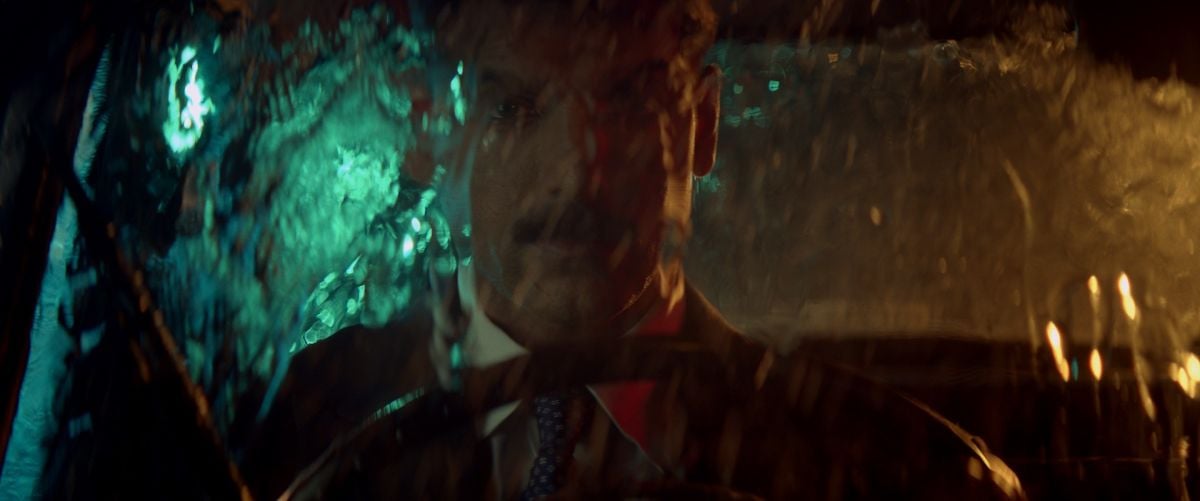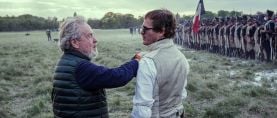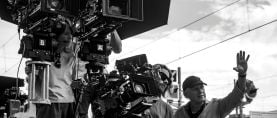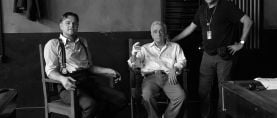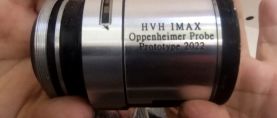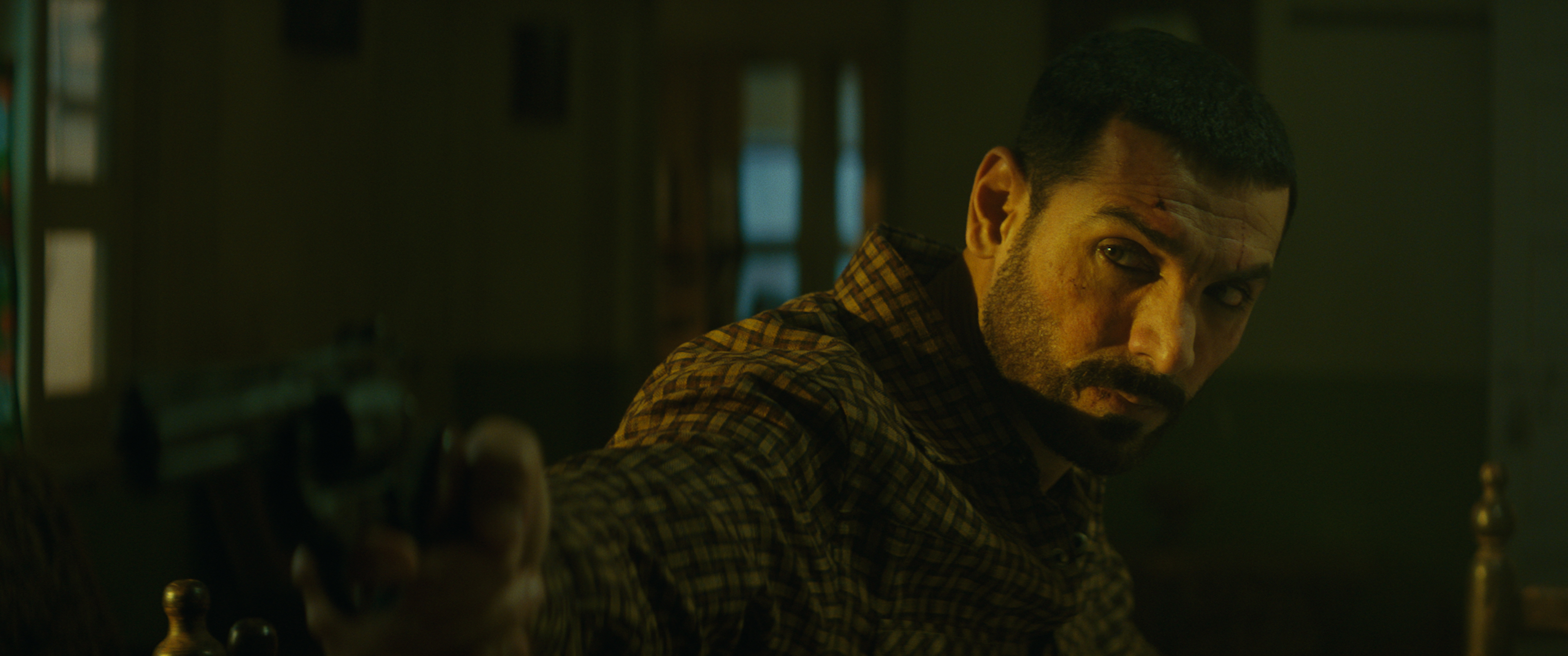
Tapan Basu on Making Romeo Akbar Walter
The cinematographer details his work behind the scenes of this Indian spy thriller that combines digital capture and Super 16 film.
The cinematographer details his work behind the scenes of this Indian spy thriller that combines digital capture with Super 16 film.
Photos courtesy of Tapan Basu. Frame grabs courtesy of Viacom 18 Motion Pictures.
In 1947, the beginning of the end of British rule on the Indian subcontinent was signaled by the splitting of the British Raj into the Commonwealth Dominions of India and Pakistan. The partition displaced nearly 12 million people along religious lines, sparking a massive refugee crisis, large-scale violence, and a prevailing atmosphere of hostility between the new territories. India became a republic in 1950, and in 1956, the creation of the Islamic Republic of Pakistan administratively split the dominion into West Pakistan and East Pakistan. By 1971, tensions between the two states had reached a breaking point, exacerbated by the simmering Bengali independence movement in East Pakistan, now Bangladesh.
Photographed by Tapan Basu and directed by Robbie Grewal, the espionage action thriller Romeo Akbar Walter is a fictionalized account of events leading up to India’s involvement in the Bangladesh Liberation War. Srikant Rai (Jackie Shroff), chief of India's Research and Analysis Wing (aka RAW) recruits the seemingly mild-mannered bank teller and part-time stage actor Romeo Ali (John Abraham) to gather intelligence in Karachi under the guise of Akbar Malik. After Akbar earns the trust of arms dealer Isaq Afridi (Anil George), he uncovers a Pakistani plot to bomb their own village of Badlipur, where Indian-backed Bengali guerrillas are training. Akbar’s cover is blown before RAW can do anything to respond, and in order to survive — and stop the bombing — he switches sides by joining Pakistan’s Inter-Service Intelligence as the double-agent Walter Khan.
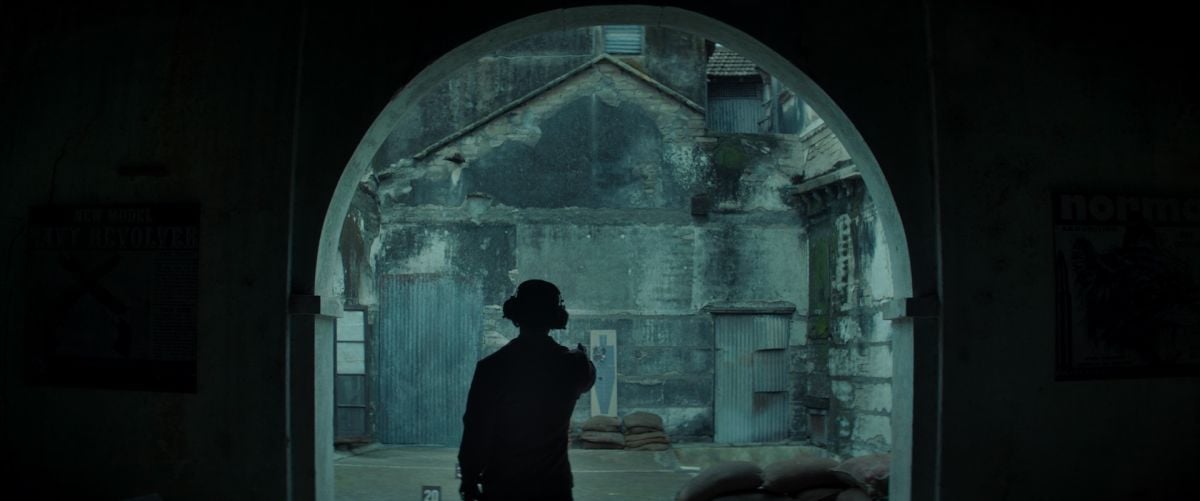
American Cinematographer: You started your career behind the camera in commercials and made the jump to features just a few years ago, with Kahaani 2. How does your professional background influence your approach to narrative filmmaking?
Tapan Basu: Most contemporary Indian commercials are narrative in concept, so whether I’m shooting a TV commercial or a feature film, whenever I’m behind the camera, I’m looking for a story.
How does the visual narrative unfold in your head when you’re reading a script for the first time?
Basu: When I first read a script I try to break it down in terms of color palette, or what kind of framing and composition I’ll want, or what kind of camera operation I’ll go for. A lot of my work is handheld, and I love playing with composition. Colors help me to create shifts in space and time. I also try to mix formats.
When director Robbie Grewal — whom I’ve worked with on a lot of TV commercials — first mentioned this script to me four years ago, I got a lot of images in my head right away. I was always fascinated by the military and the idea of being a spy, so naturally I’m inclined to do a movie on the subject. But the most important thing was to get on the same page from the very beginning.
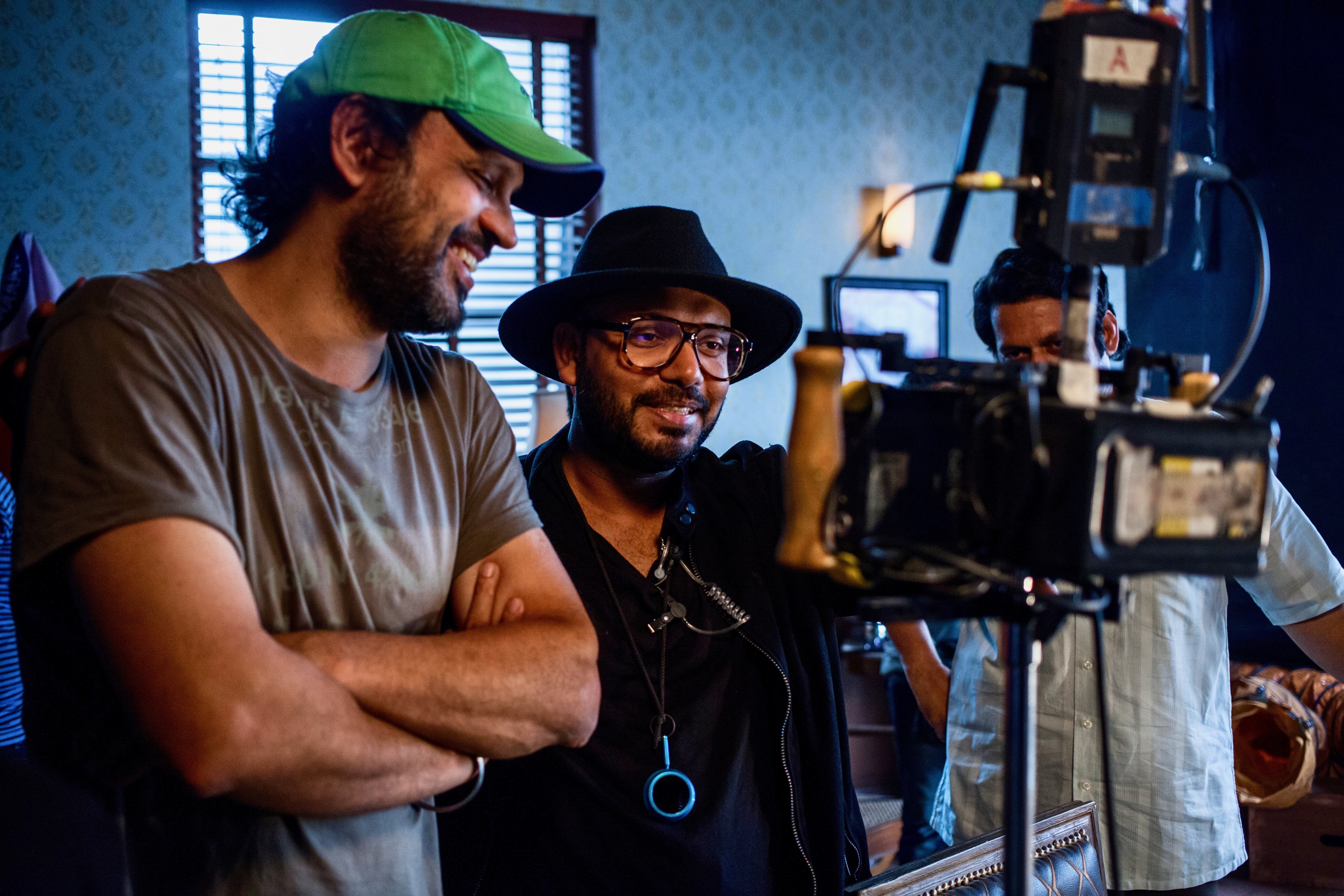
What were your initial ideas?
Basu: We wanted the look to be influenced by the 1970s but shot in a modern way. I started by looking at references from that era, in terms of photographs, art, architecture and design. Then we went on a location scout. We were on a limited budget, so we had to achieve almost everything on locations.
What were some of the 1970s-era visual elements that you wanted to convey?
Basu: We were looking for locations, color space, costumes and art. We were thinking about the shooting style as well, with old anamorphic lenses, but the only possibility was to go with the Hawk V-Lite 2x anamorphic primes, and there are only two sets available in all of India. Our set had four lenses in it — 35mm, 55mm, 80mm and 110mm — and RAW was shot mostly with a 35mm and 55mm. I love shooting anamorphic because I can get very close to the character and still see their surroundings. We stayed away from handheld operating until we needed it, and even then we often used a Steadicam [operated by Lanhert Pereira] instead, with slow, consistent moves. In terms of modernity, Robbie wanted to incorporate more stylization, like shooting with reflections and a strong color palette.
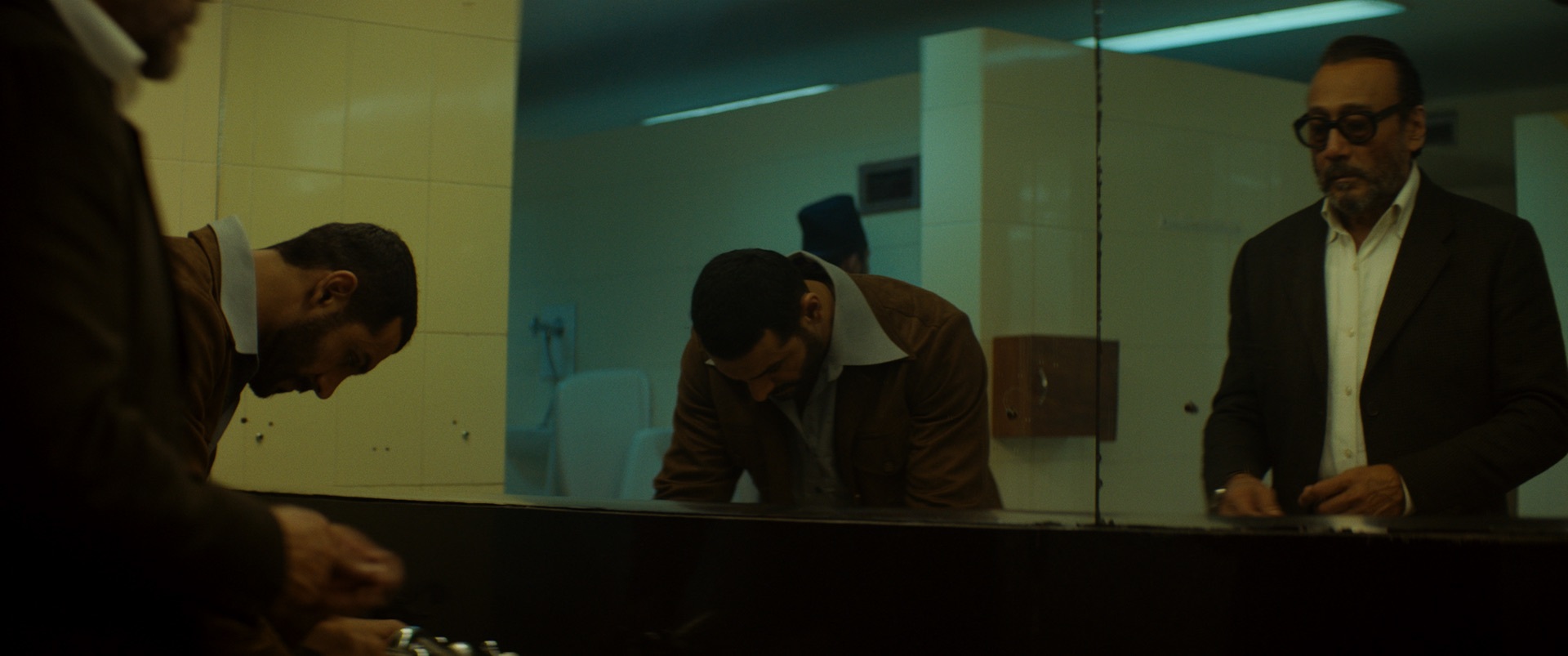
What can you tell us about the film’s color palette?
Basu: I like to use colors to differentiate space and time, and I always try to get everything in-camera with LUTs and filters. For the scenes set in the north of India, I worked closely with director Robbie Grewal and production designer Madhur Madhavan to choose very cold colors — blue wall colors with daylight-balanced practicals, except in the RAW chief’s office.
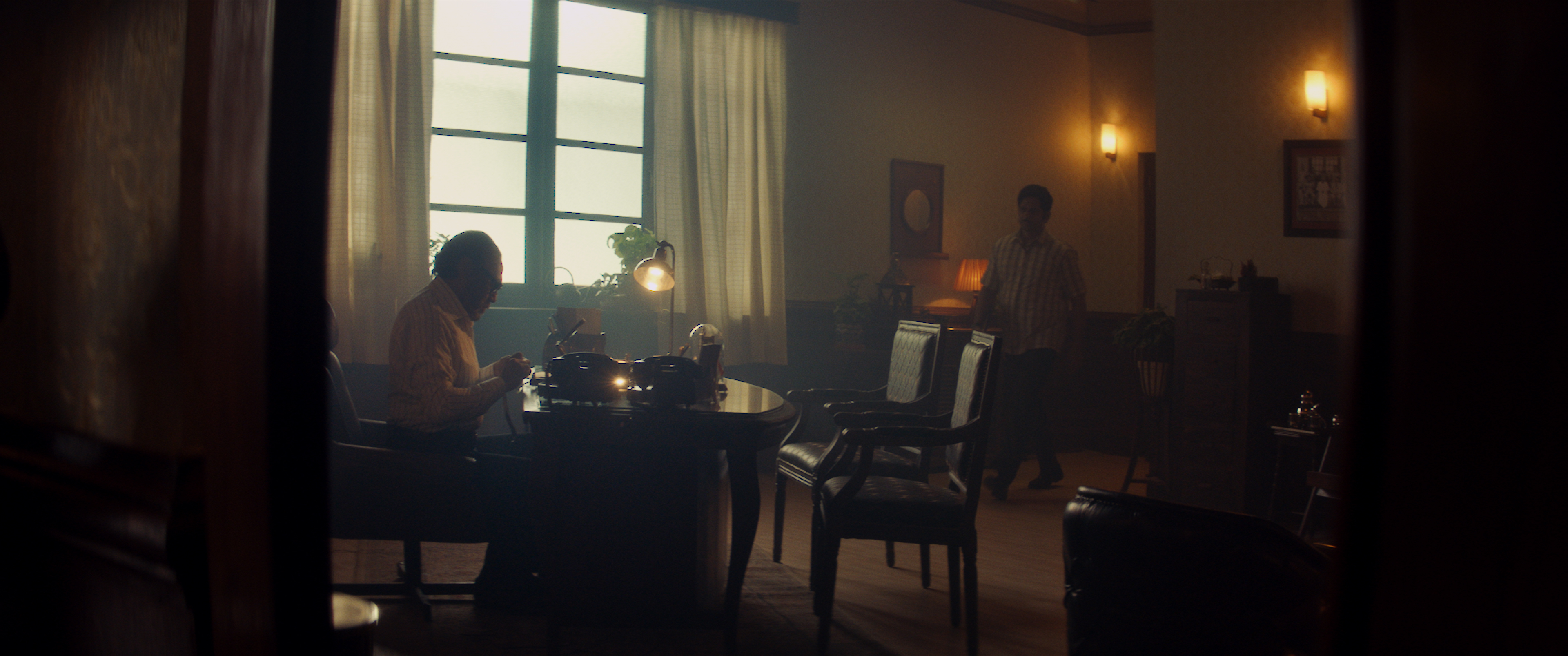
Why is that?
Basu: We wanted the look to reflect the character rather than the space. The warm tonalities better suited his wardrobe and personality: caring, refined and sensitive. He tends to plants, he listens to classical music. He was an officer in the British army, so there’s a certain British influence and quality to his attitude and environment.
Later, when Akbar goes to Pakistan-occupied Kashmir, we used a Tobacco 1 filter for everything, and when he moves on to Karachi in Pakistan, we used a lot of green wallpaper and warm practicals.
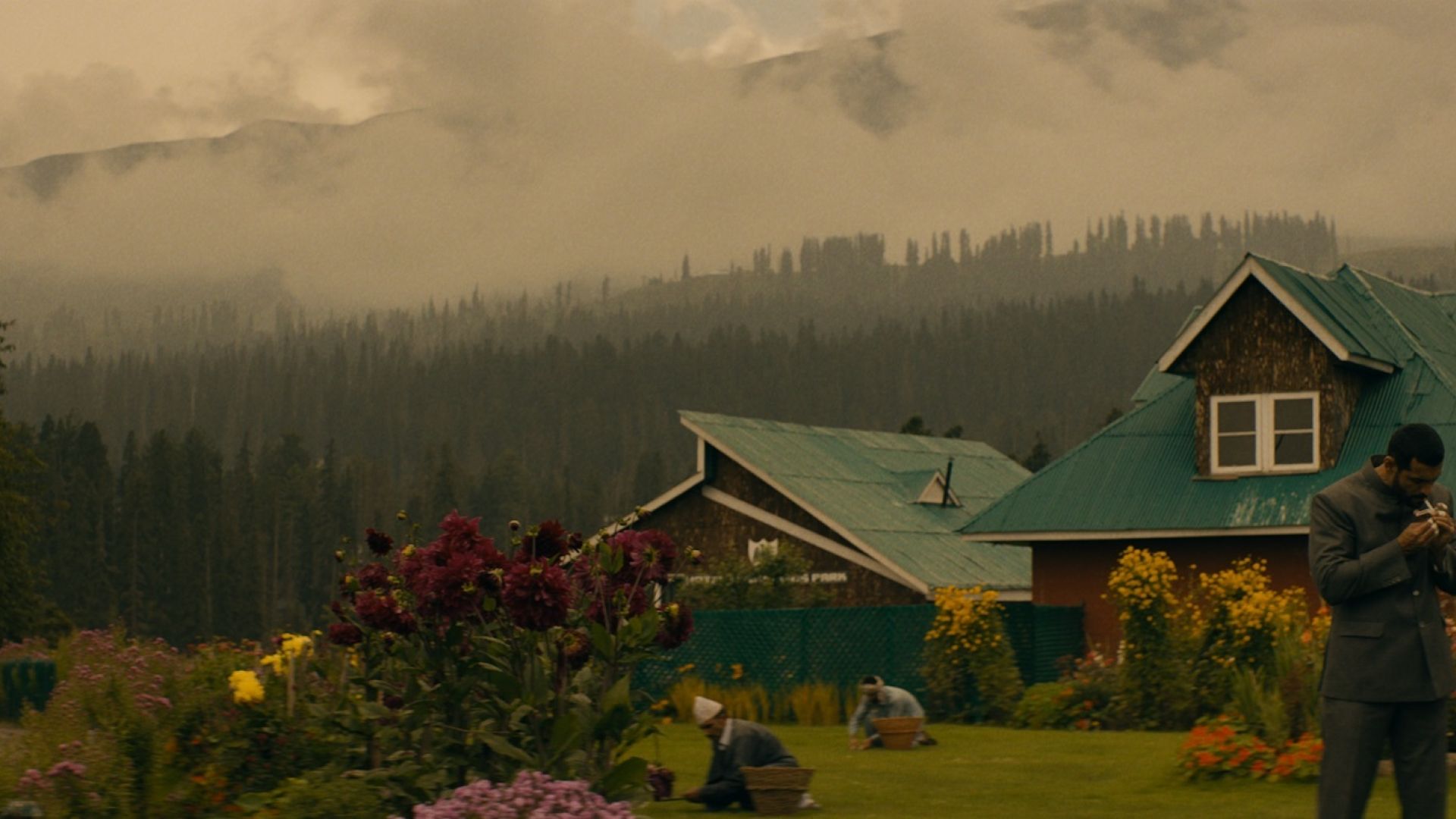
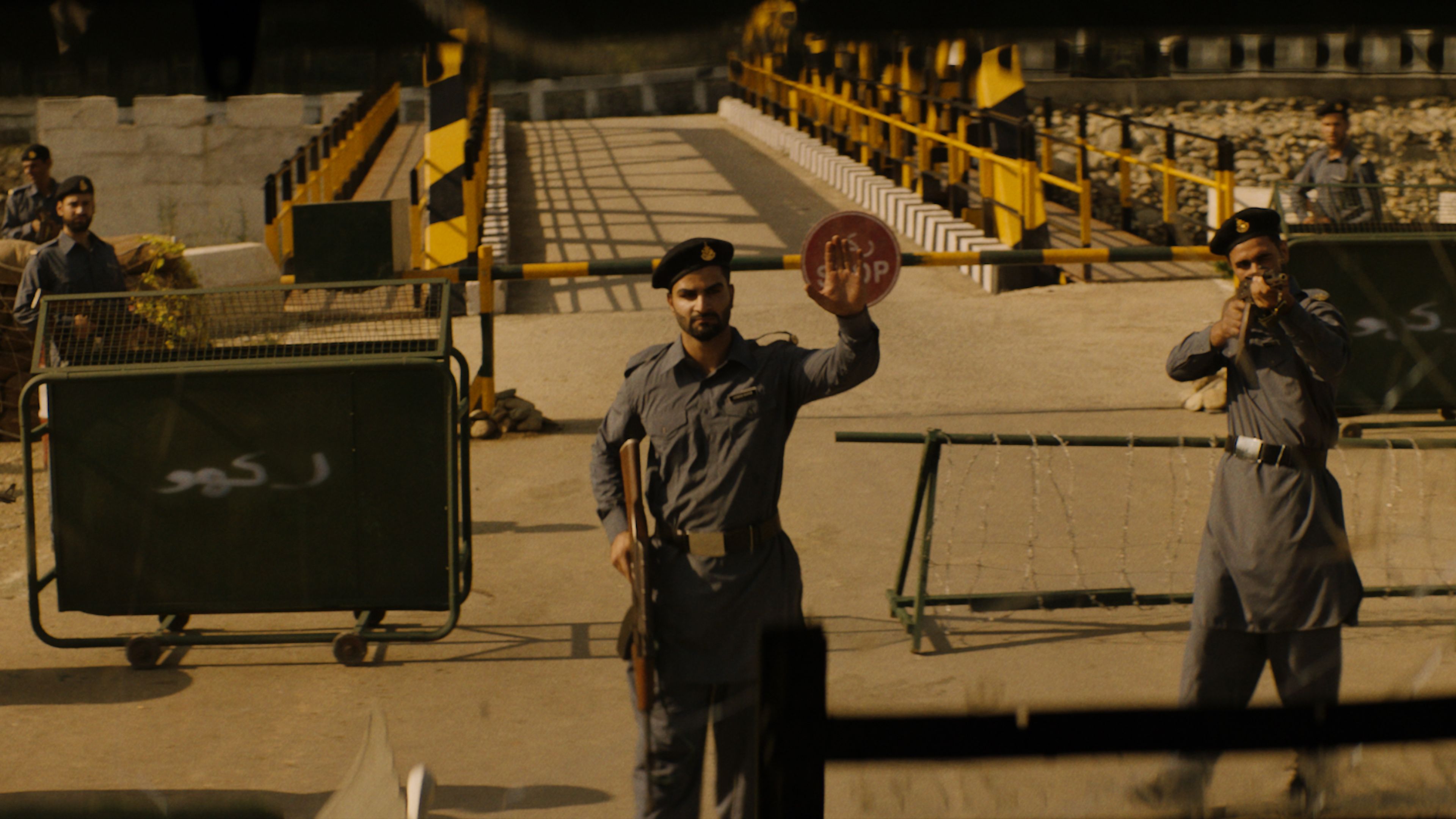
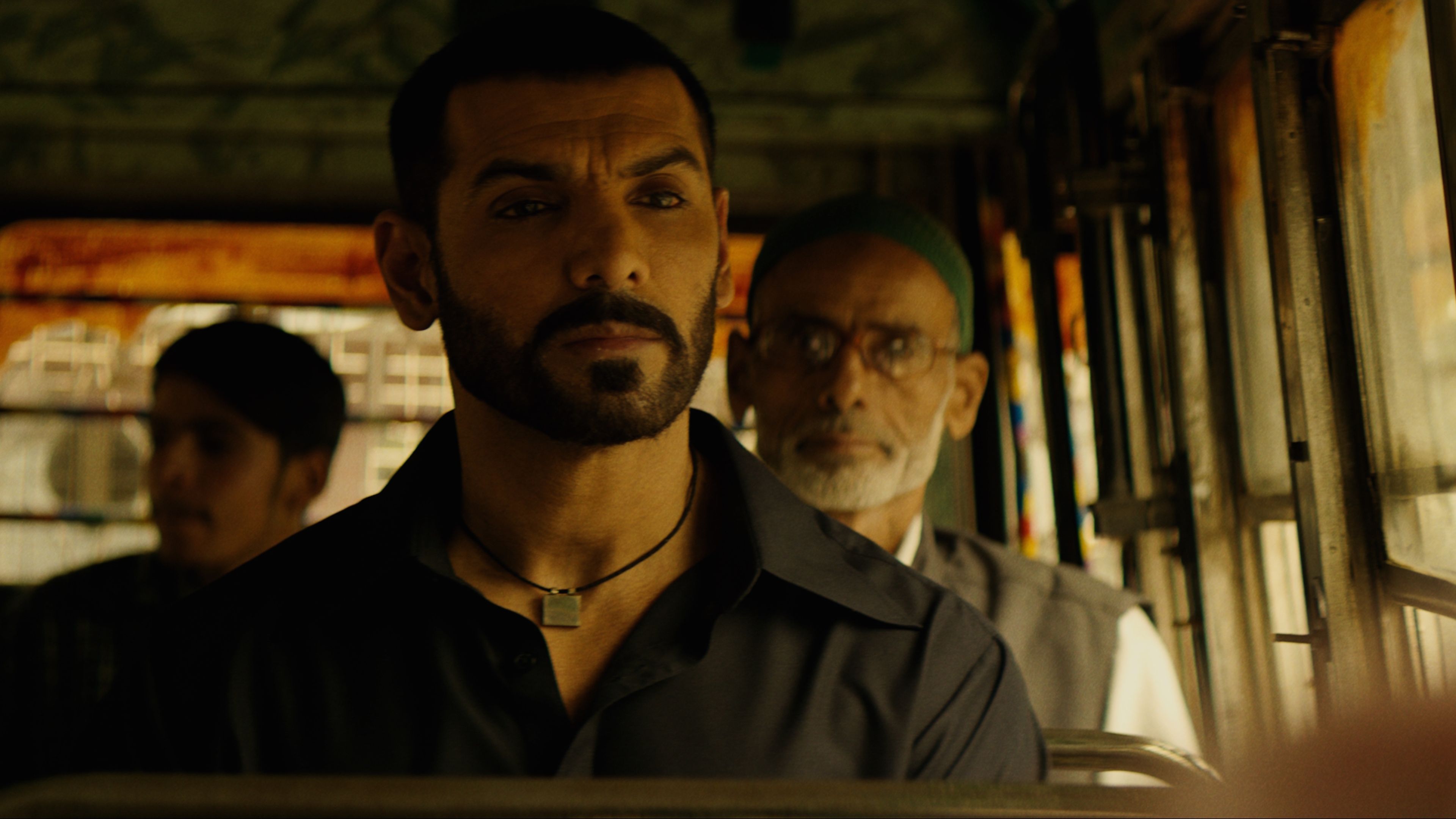
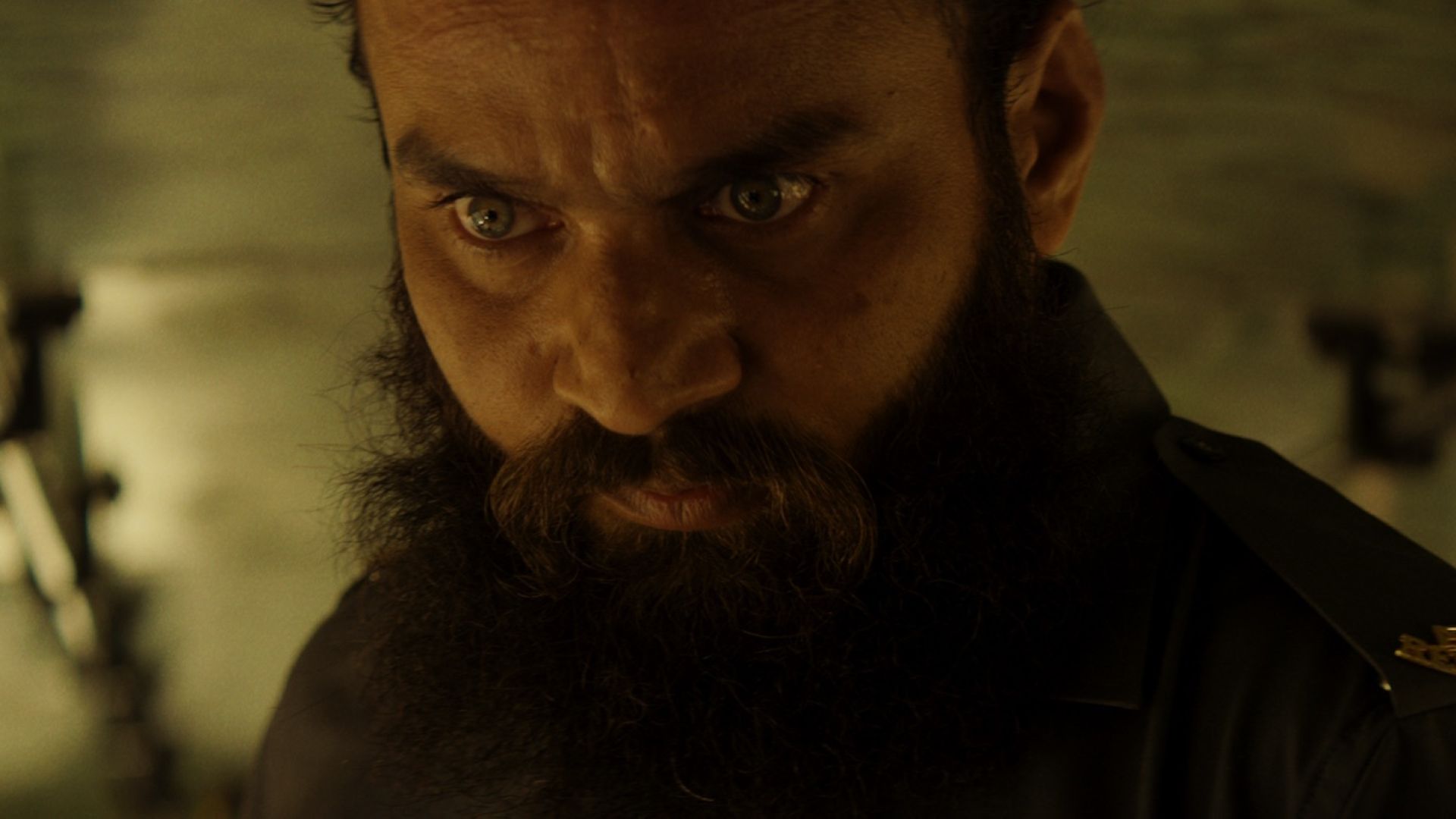
Red is also used as a visual motif throughout the film.
Basu: That came from Robbie. In Karachi, when Akbar meets the Indian diplomat Shradha Sharma [Mouni Roy] in her house, there’s a red curtain that turns the whole room that color. This part was more art driven. I used it again during the bombing run as well, with the red light on Akbar and Pakistani colonel Khan [Sikandar Kher]. There, it’s more about the state of mind between the characters, and building tension.

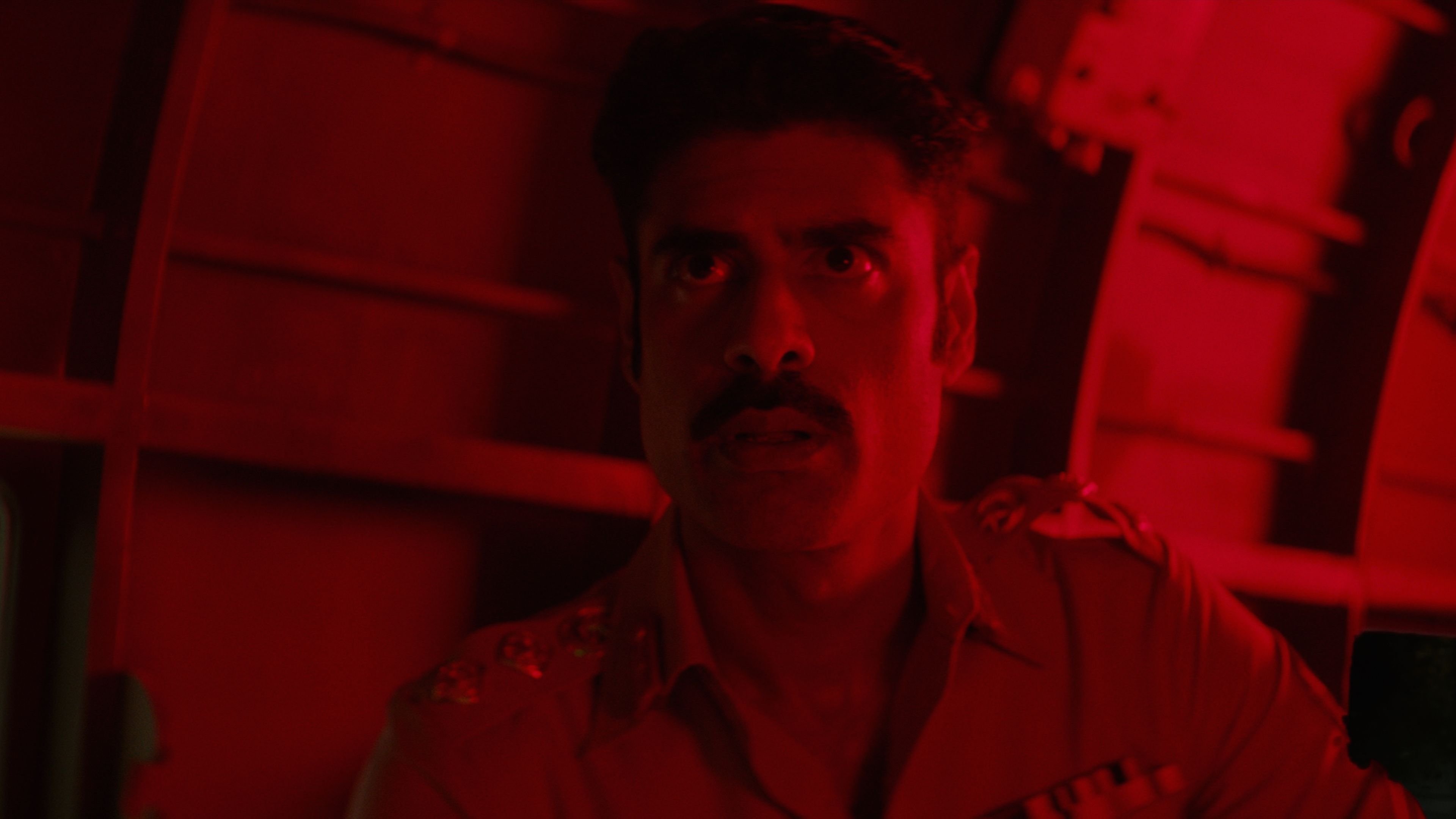
How does the structure of a Bollywood camera and lighting crew compare with that of a U.S. or even European crew?
Basu: If you’re just talking about the cinematography department, one of the biggest differences is that the DP always operates the camera. Usually, the 1st AC coordinates between the camera department and production, and will also help the gaffer with lighting; maybe they’ll operate the second camera, unless it’s a Steadicam. They may or may not pull focus — usually there’s someone designated as focus puller. The second AC does all the camera reports and makes notes like everywhere else.
Another difference you’ll find is that camera rentals come with their own technicians. It’s more like an assurance for the rental house, as they feel the insurance coverage is not so strong here. The gaffer does the lighting and the flagging, while the key grip will assist with building and rigging.
Kind of like the British system.
Basu: Yes.
In the spectrum of Bollywood films, Romeo Akbar Walter exists on the more serious, dramatic end. You have all the crowd-pleasing ingredients: the huge stars, the music, the melodrama and the epic scope. But it’s also moody and serious, and much of the action takes place within personal and intimate proximities. How did you keep this tone in balance?
Basu: From the beginning, I was given the freedom to keep things moody and dark. Of course, I would have loved to go even more moody. That’s how my commercial work is known. I did go darker in terms of contrast, way more than you’d see in a typical Bollywood movie. But that’s the reason I kept sharing reference pictures in the beginning, to make sure Robbie and the producers and I were all on the same page. The producers wanted more musical numbers, but Robbie stood his ground.
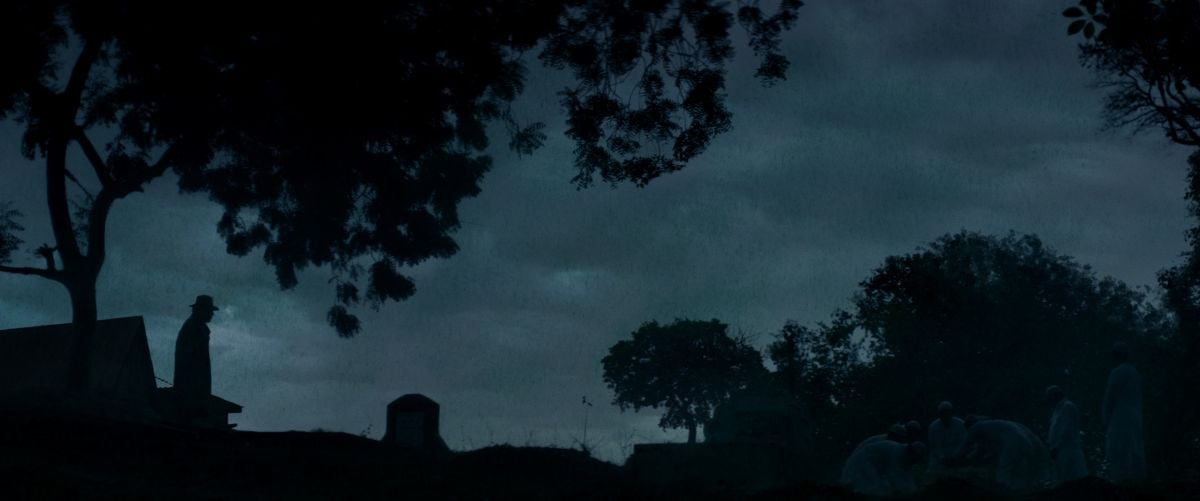
I can imagine it’s not just the producers and the filmmakers who are thinking about these things; it’s also the audience. When you’re dealing with someone like John Abraham, who’s a massive Bollywood star, are people used to seeing him in a particular way?
Basu: Yes, John is known as an action star, but here in this movie we get to see a very different John. I never treat it like I’m filming with a star. I see the character they’re playing. And I never light up an actor; I believe in lighting the environment first, and then I let the character be in that environment. If I start thinking that I’m shooting a star or someone in a certain way, it distracts me from the script. You need your director’s support, for sure. Robbie was very supportive, and so was John.
In what way?
Basu: On our first day on set, John called me out and told me that if I needed any kind of help in terms of lighting, just let him know what to do. He didn’t even have a stand-in; he wanted to be there to help me do my job. He was very helpful and polite about it.
You mentioned that you tried to shoot almost everything on location. What were some of your key locations?
Basu: The movie starts in India, then Akbar travels to Pakistan-occupied Kashmir, then he goes to Karachi, then there’s a segment in Nepal, then a flashback to the evacuation of Bangladeshis in what was then East Pakistan. Most of the movie that was set in Pakistan was shot in Gujarat [India’s westernmost state, north of Mumbai], 10 cities there; we shot the POK part in Srinagar and Gulmarg in Jammu and Kashmir, then we filmed in Nepal, then did our interior scenes and sets in Mumbai.
We couldn’t shoot in Pakistan, given the situation there. Re-creating Pakistan in Gujarat was hard, yet we managed to pull it off convincingly.

Why shoot there if it was so hard? And how did you get away with it?
Basu: These places already had a Muslim-culture vibe and a 1970s feel to them, but generally the people there don’t want their city to be portrayed as Pakistan, even in a film. They take it very personally. We were able to change a few signs and billboards overnight, then shoot quickly in the morning, but our budget was so limited that if I moved the camera off the art, we’d be in a different city.
I understand that one sequence in particular was shot out of order, in three separate cities. Can you walk us through it?
Basu: We did it this way to accommodate the schedule of the first actor who was cast in the lead role but then dropped out due to a scheduling conflict. When John came on board, we designed the chase based on those locations, which I shot tests for and then edited in sequence. When we did the location breakdown for shooting, it ended up with the end of the chase in one city [being shot first], then the middle of the chase in another city, and the beginning in another. The whole movie is like that, actually. Because of the multiple locations, even a simple walk-and-talk would start in one city, and when it turned a corner, we would be shooting in another. We eventually ended up shooting in 114 locations, in 14 cities, over a period of 46 shooting days. For that chase sequence, the last shot dictated the whole sequence’s look, as it was shot first.
What was the trickiest part? The weather? Matching locations?
Basu: Weather is always a challenge. Most of the movie is under cloud cover, and we were lucky to get that when we needed it, though sometimes I had to skim the daylight for a consistent look. More challenging than that was being on location. A lot of times I literally couldn’t move the camera an inch in either direction, otherwise I would see the people who came to see John. One day, we actually had to cancel filming because 5,000 people had showed up just for him!
Which sets did you build? Where were your stages?
Basu: Robbie was very specific about a few things, such as the RAW headquarters. You see Romeo exit the jeep in front of the headquarters, he walks through some office space, then goes up a staircase, then he goes into this huge warehouse — that’s four different locations in Gujrat and Mumbai. The RAW chief’s office was a set we built at Filmalaya Studios [in Mumbai], where we also built the interior of the Douglas C-47 bomber. The Inter-Services Intelligence interiors were filmed in a defunct mill.
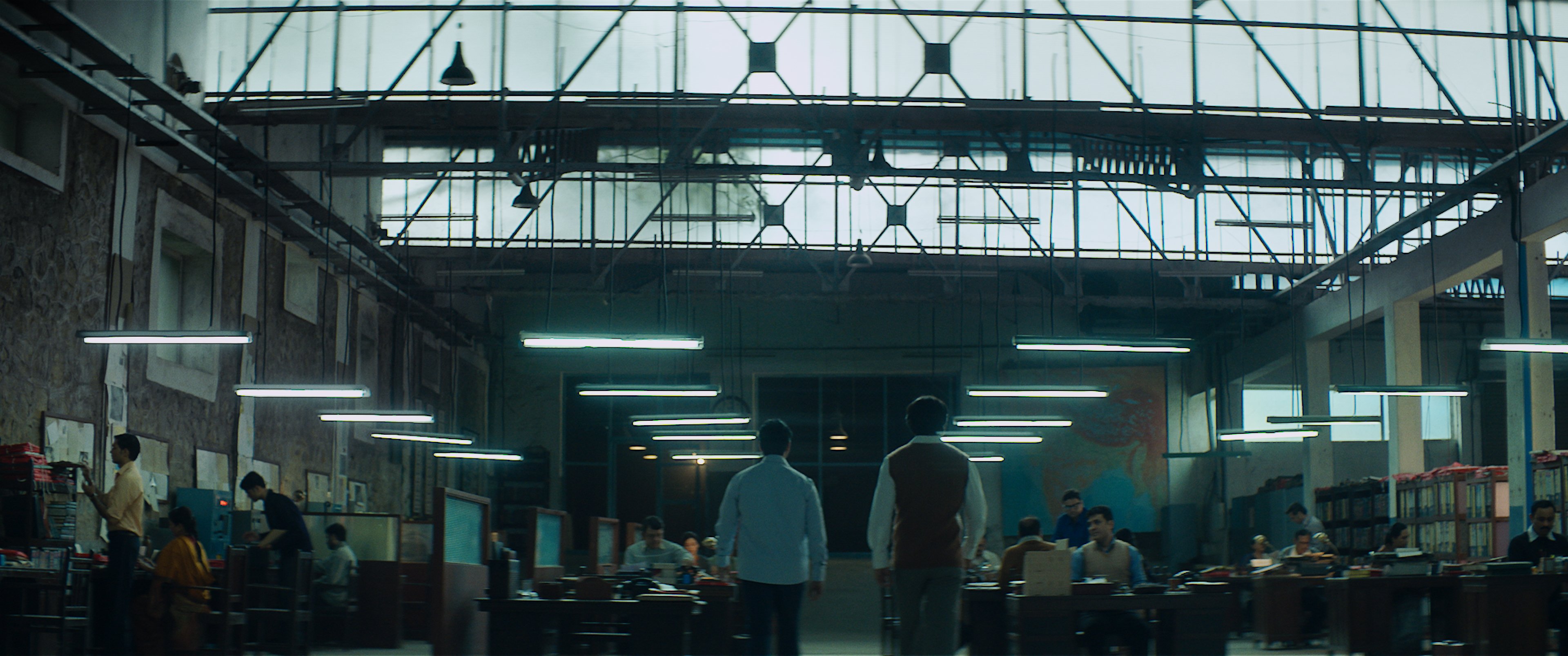
When you’re lighting a set, which do you prefer to work with — practicals or studio lamps?
Basu: If you compare RAW with the average Bollywood movie, we had a strong lighting package, but I used very few big sources — one 18K, one T24, two M90s, 12 Dinos and couple of smaller Arri M-Series and SkyPanel units. It’s all based on what I’m trying to achieve. With exteriors, it might be more economical to control a day exterior with negative fill or skimmers to get the look we require.
Whenever I first come to set, the first thing I’ll look for are practicals from the art department and whether or not I can use them. Then maybe I’ll have a single big source from the outside, but I always take the help of available light first. The whole idea is to make it natural and feel like it’s part of the narrative.
Earlier you mentioned LUTs and filters. How did you balance their use to achieve the movie’s looks in-camera?
Basu: I’ve been working with colorist Navin Shetty for a long time. We did some tests in preproduction, and he gave me a few LUTs to work with. I also love using through-the-lens filters. Most of the time I used a 1/8 Tiffen Glimmerglass to take away the digital sharpness. The one sequence I didn’t use it for was Akbar’s torture sequence, where I used a Lensbaby. In the POK I used a Tiffen Tobacco 1 filter, except for the interiors because we didn’t have the exposure for it, so I achieved the look for those scenes in post.
Every day after shooting, I sat with DIT Selva Vinayakan and 2nd AC Cherin Paul and graded stills from the rushes in Adobe Lightroom. Then we took the graded stills from every scene and put them into Final Cut Pro to make a 45-minute cut of the movie so Navin could reference the color in edit order.
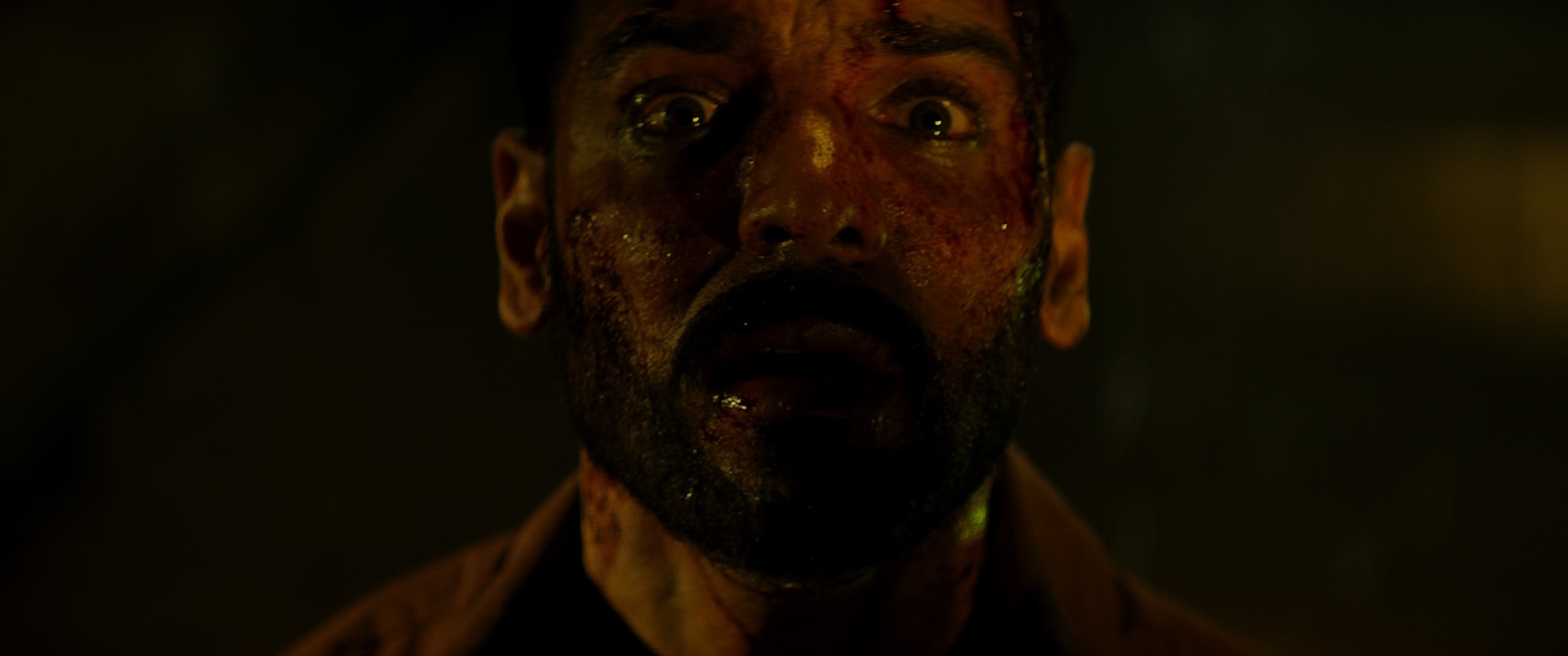
Were you shooting wide open?
Basu: I’m used to shooting full open — and on this movie we did that for nights — but mostly it was set to T4, and in certain places we went to T5.6 or T8 for more depth of field.
What about your ISO?
Basu: Our cameras were set to ISO 800, and I was mostly shooting a stop down. At night we shot two stops down in some places. I have a tendency to underexpose with digital, because I like the quality of the digital noise you get when you when you bring it up [in post]. We used the LiveGrain 35mm scanned grain structures for most of the film, and 16mm in POK.
You shot most of the movie with digital cameras — Arri Alexa SXT and Minis — but you also shot in Super 16 on film.
Basu: [Super 16 was used] for the evacuation of the Bangladeshi villagers. Production had the deal to shoot with Arri Alexas, but I felt that the best way to capture this scene was to shoot on film, so for one day we got an Arri SR3. I didn’t get to do any 16mm tests, so the way it happened was that we shot first with a digital camera and then we shot it with the Super 16 camera. In post we made it black-and-white. That scene is also framed differently, in 1.85:1, which we used to match with the blown-up historical footage we received from the Film Division of India. We shot more documentary-style, handheld, with different stocks, and I was overexposing and underexposing it.
Where was the Super 16 footage processed?
Basu: It was processed at Kodak Film Lab in Mumbai.
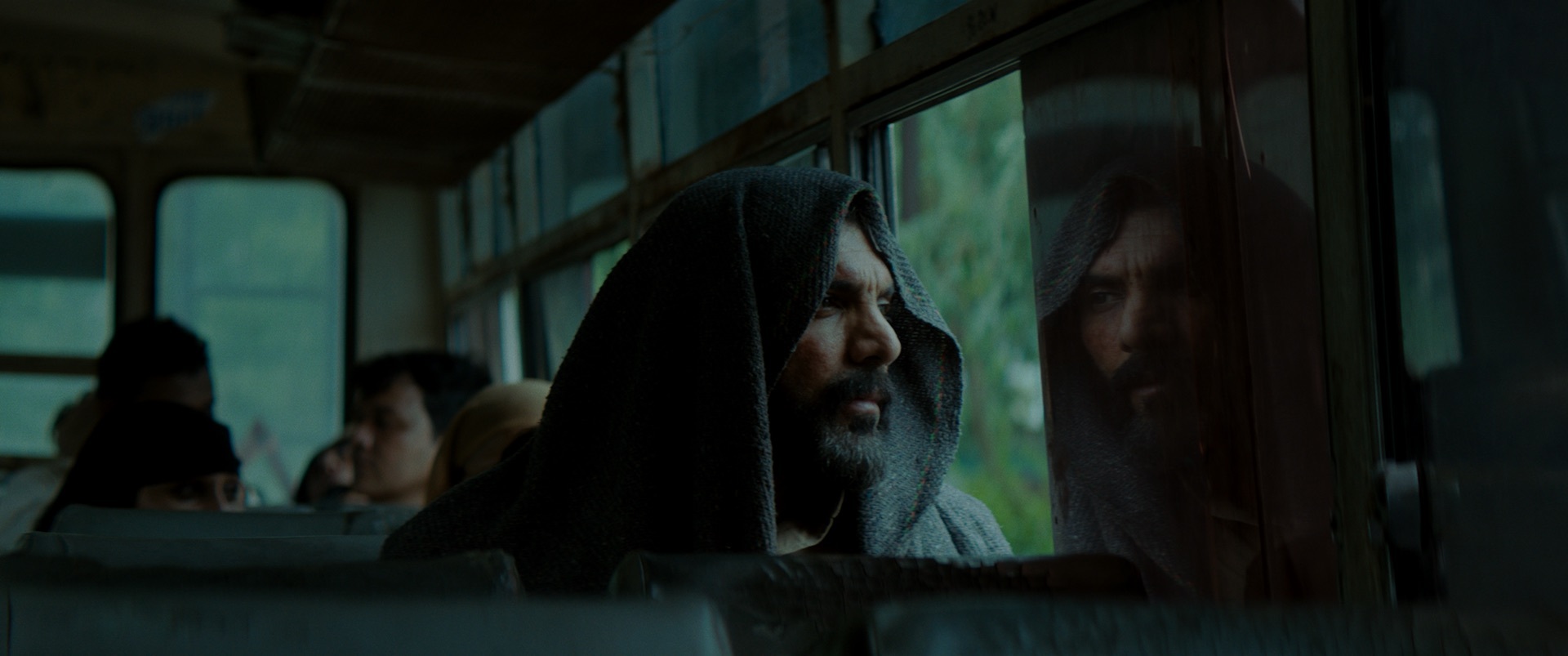
What is the balance of capture technology in Bollywood filmmaking right now?
Basu: I think all films are being shot digitally now. There’s a little bit of mixed format. I had originally wanted RAW to be shot on film, but, because of the logistics, we couldn’t do it.
Where did you get your cameras?
Basu: From RD Equipment in Mumbai, and they sub-rented our lenses from Anand Cine Service in Chennai. Our lights — and gaffer Mehmood Ali Shah — came from Light N Light, and our grips came from CineGrip. The key grip was Imran Khan.
Does your entire grip and electric crew come from the equipment rental house?
Basu: Yes, every lighting company will have their own gaffers, and the grips will come from their own company. That’s why I think we have this Indian 1st AC system, because the 1st AC is always with the cinematographer.
I follow the U.S. system, where my 1st AC, Rajesh Nare, pulls focus; he has been working with me for the last four years, right from my first feature. For RAW, since we had multiple locations and his interest lies in lighting and operating, he was coordinating between production, the gaffer and me, and also helping in advance to prelight setups — more like the Indian 1st AC system — and at times operating the B camera. I had a designated focus puller named Bobby for RAW.
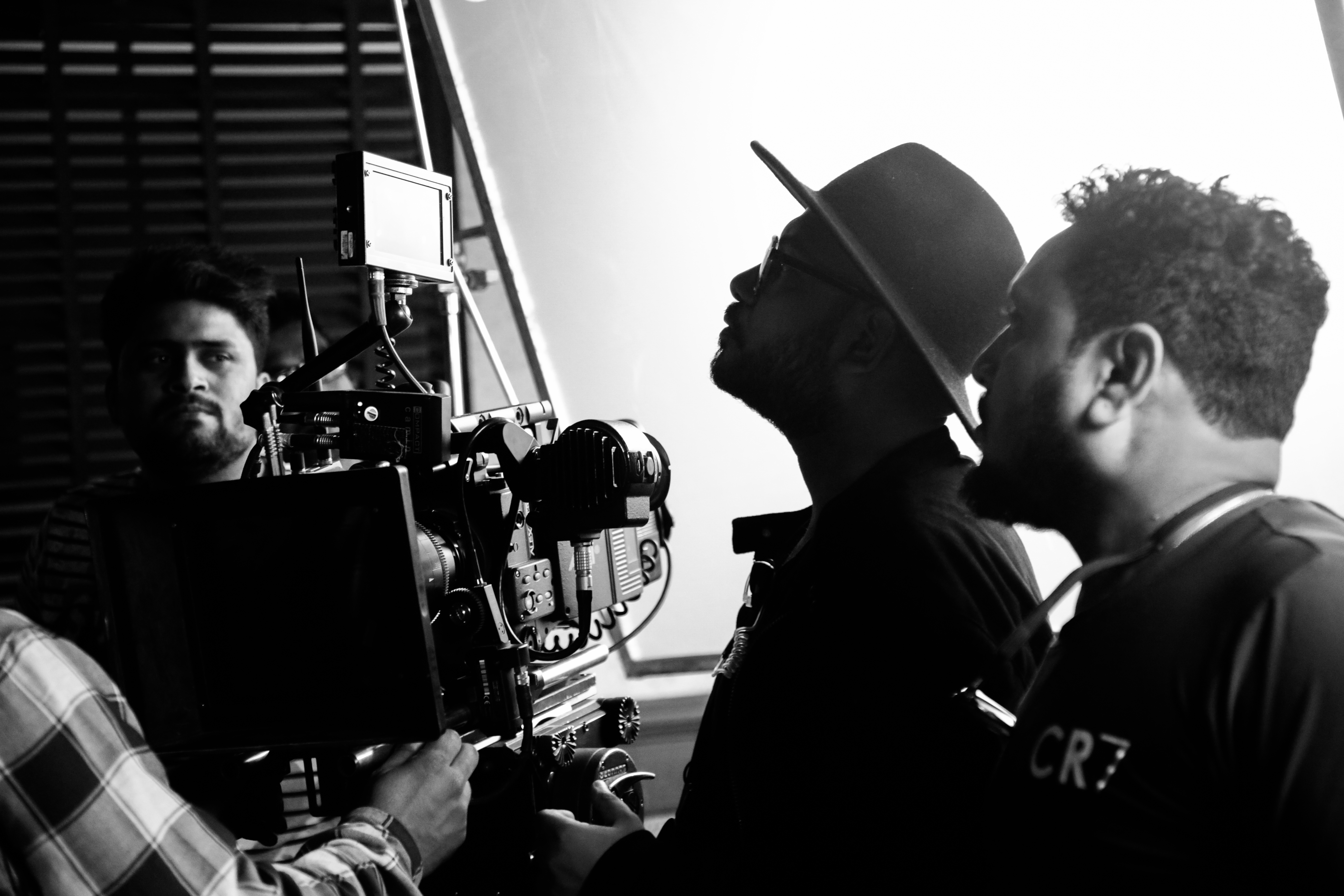
Where did you do your postproduction, and what kinds of adjustments did you make in the DI?
Basu: The grading was done at Quality Cine Labs in Mumbai. We graded in [FilmLight] Baselight at 2K after capturing ArriRaw 3.4K to 1TB Codex drives and 256GB CFast cards for a final 2.39:1 aspect ratio. A 2K digital master was delivered to the distributor for a DCP deliverable.
Mostly we worked on evening out the shots, and applying a look to the POK scenes where I couldn’t use Tobacco filters. There are also these flashbacks where Akbar is thinking about his mother — a blown-out look that was totally derived in post. That’s where the melodrama comes in. We didn’t have enough time to prep for every look we wanted, so I had to shoot much of the film straight but keep an open mind about what we wanted it to look like later.
We made the Bengali evacuation footage black-and-white so as to match the archival footage — and also the torture sequence with Col. Khan, for the blood-dripping shots, because our international distributor told us that if we wanted a U/A certificate [Parental Guidance for children below the age of 12 years] for the Indian diaspora, we needed to either cut it out or make it black-and-white. It eventually worked better, so we kept it for the domestic version as well.
You said before that the new generation of filmmakers is bringing change to the Bollywood system of production. How so?
Basu: The new generation is bringing a leaner, smaller crew. Trying to experiment more. Bollywood films are changing a lot in terms of the stories being told. People in the older generation are also becoming more accepting of younger people working in senior positions.
Do you see yourself as a bringer of change?
Basu: Change is a constant. There are negatives to it sometimes, but you just have to embrace the positive side. Let go of technology and just focus on telling the story.
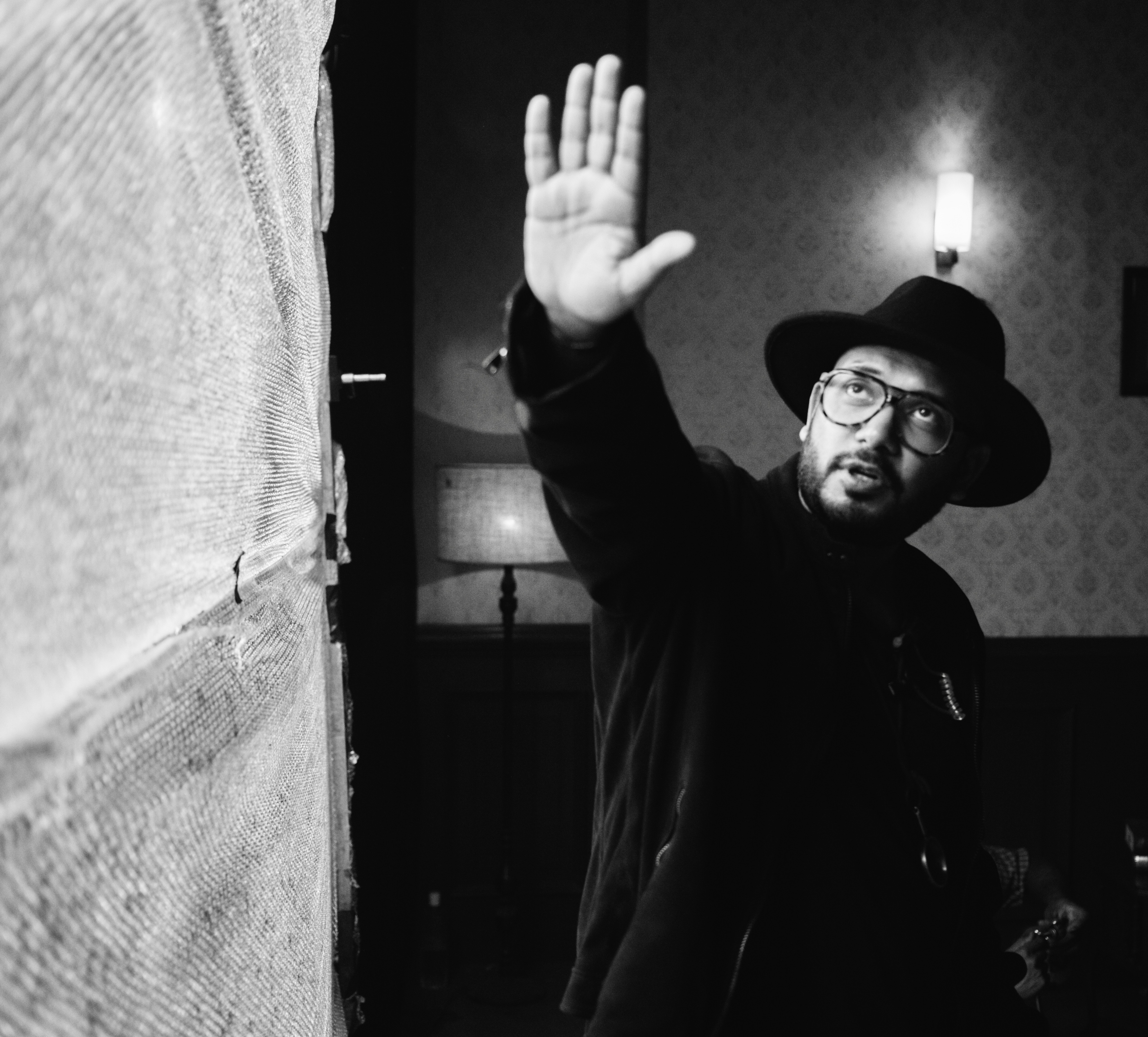
TECH SPECS
2.39:1
Digital Capture with some Super 16mm
Arri Alexa SXT, Mini; Arriflex 16 SR3; Phantom VEO4K
Vantage Hawk V-Lite 2x, Hawk C-Series; Lensbaby; Zeiss Super Speed (Super 16mm); Kino Optics Kodak Vision3 50D 7203, 250D 7207, 500T 7219
